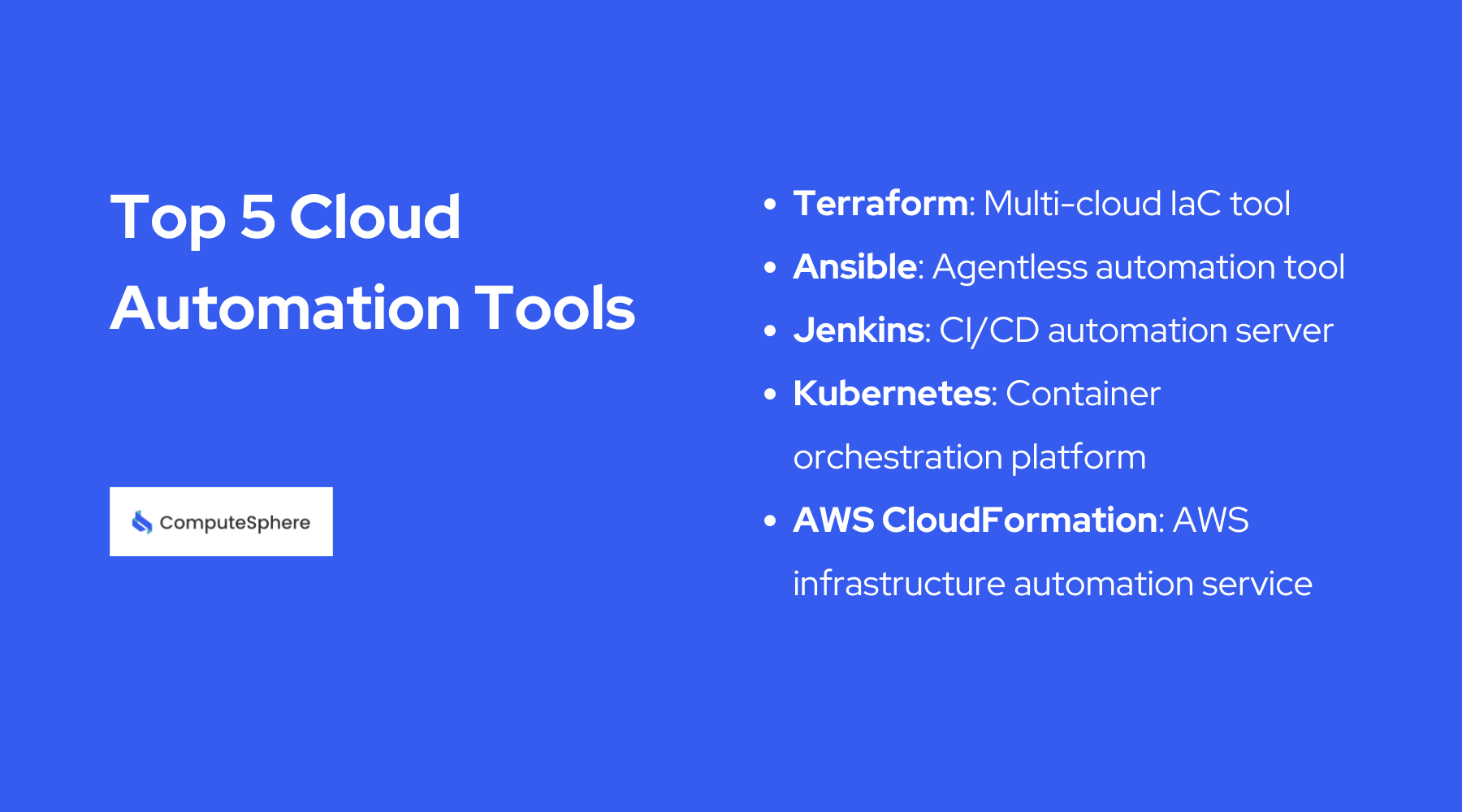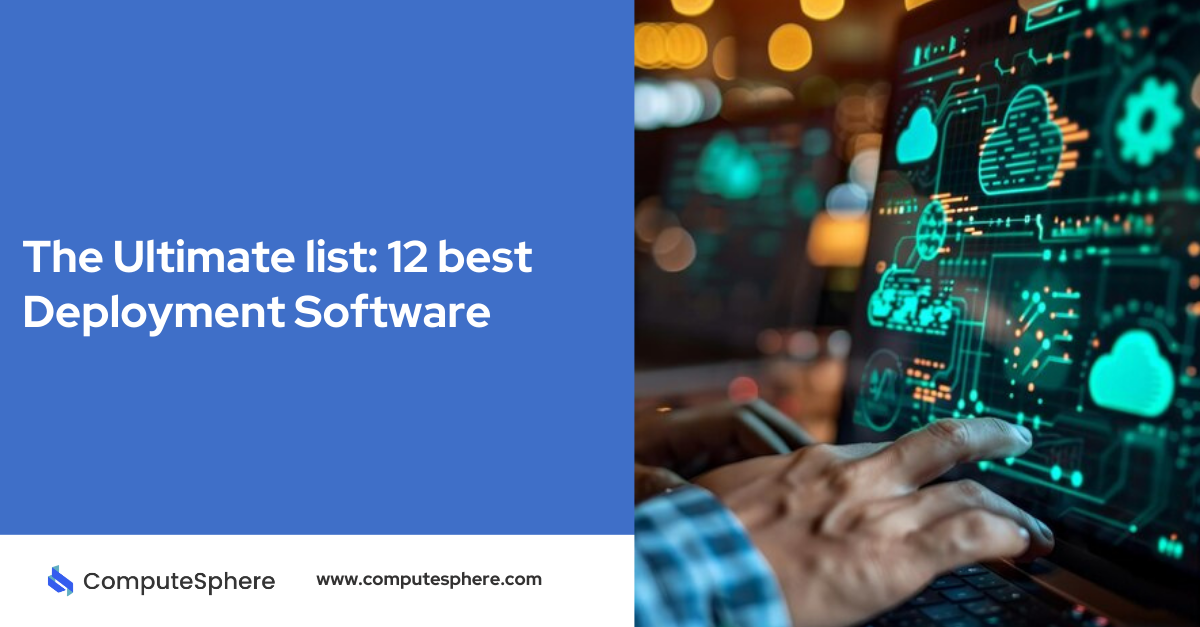5 Must-Have Tools for Cloud Infrastructure Automation

Dealing with cloud infrastructure manually can be a headache, filled with inefficiencies and potential errors. Automating your cloud infrastructure not only saves time but also ensures your systems run smoothly and scale effortlessly. If you're looking to enhance your cloud management, the right tools can make all the difference.
Whether you're just starting or have years of experience, integrating these essential tools will greatly improve how you handle your cloud infrastructure. Here are the five must-have tools that can improve your productivity and streamline your operations, helping you with cloud infrastructure automation.
Top 5 Cloud Automation Tools

1. Terraform
Terraform is a leading solution for Infrastructure as Code (IaC). This open-source tool by HashiCorp allows you to define and provision data center infrastructure using a high-level configuration language.
Terraform’s strength lies in its multi-cloud support and state management. With Terraform, you can use the same configuration to manage multiple providers and handle dependencies between resources effectively.
Benefits
The primary advantage of using Terraform is scalability. You can manage and scale your infrastructure consistently across various cloud platforms. Additionally, Terraform’s version control capabilities enable you to track changes and collaborate with your team efficiently.
2. Ansible
Ansible, developed by Red Hat, is an open-source tool that is best in configuration management, application deployment, and task automation. Ansible’s agentless architecture is one of its most compelling features. Unlike other tools that require agents to be installed on target machines, Ansible uses SSH for communication. Its playbooks, written in YAML, make automation tasks straightforward and readable.
Benefits
Ansible is easy to use and highly flexible. Its extensive module library supports various automation tasks, from provisioning to orchestration. You don’t need to be a programming expert to start with Ansible, making it accessible to a wide range of users.
3. Jenkins
For Continuous Integration and Continuous Deployment (CI/CD), Jenkins is the go-to tool. This open-source automation server supports building, deploying, and automating software development processes.
Jenkins offers a rich plugin ecosystem, allowing you to extend its abilities to fit your needs. With pipeline as code, you can define your build, test, and deployment processes in a Jenkinsfile, making them reproducible and version-controlled.
Benefits
Jenkins automates the entire software delivery process, from code integration to deployment. This not only speeds up your development cycle but also improves the quality of your releases by catching issues early through automated testing.
4. Kubernetes
Kubernetes, often abbreviated as K8s, is the leading container orchestration platform. Developed by Google, Kubernetes automates the deployment, scaling, and operations of application containers.
It offers self-healing, load balancing, and automated rollouts and rollbacks. Its declarative configuration approach allows you to describe the desired state of your application and let Kubernetes maintain it.
Benefits
Kubernetes simplifies the management of containerized applications. It handles the complexities of container orchestration that allow you to focus on developing your applications rather than managing the infrastructure.
5. AWS CloudFormation
AWS CloudFormation provides a way to model and set up your Amazon Web Services resources using a template. This service automates the provisioning and management of your AWS infrastructure.
With CloudFormation, you define your cloud resources in JSON or YAML templates. These templates can be version-controlled and reused, ensuring consistent infrastructure setups.
Benefits
CloudFormation simplifies infrastructure management by automating resource provisioning. You can use it to create and manage AWS resources consistently and predictably, reducing the chance of manual errors.
Why Automation Matters
Automation in cloud infrastructure goes beyond saving time; it ensures reliability, consistency, and scalability. By automating repetitive tasks, you reduce human error, minimizing downtimes and security risks. Automation tools enable your infrastructure to adapt dynamically to changing workloads, optimizing performance and cost-efficiency.
Streamlining workflows allows your team to focus on strategic tasks, improving productivity and enabling innovation. Automated processes ensure consistent, best-practice infrastructure setups, reducing configuration drift. As your business grows, automation tools allow seamless scaling of cloud resources, meeting increasing demands without compromising performance or reliability.
Conclusion
Automating your cloud infrastructure is no longer a luxury; it’s a necessity. With tools like Terraform, Ansible, Jenkins, Kubernetes, and AWS CloudFormation, you can streamline your operations, improve efficiency, and reduce the risk of human errors. These tools empower you to manage and scale your infrastructure with ease, allowing you to focus on what truly matters while developing and delivering innovative solutions.
By using these must-have tools, you'll not only stay ahead of the competition but also ensure that your cloud infrastructure is powerful, scalable, and resilient. So, leap and start automating your cloud infrastructure today.
Contents
Built for Builders. Priced for Startups.
Tired of unpredictable cloud bills? ComputeSphere offers modular, fixed-cost cloud hosting that grows with your startup—no DevOps headaches, no surprises.
Get StartedShare this article
Browse Some Related Blogs
Relevant and related contents you can read









